Complete Investing Guide for Cannabis, Weed and Hemp Markets
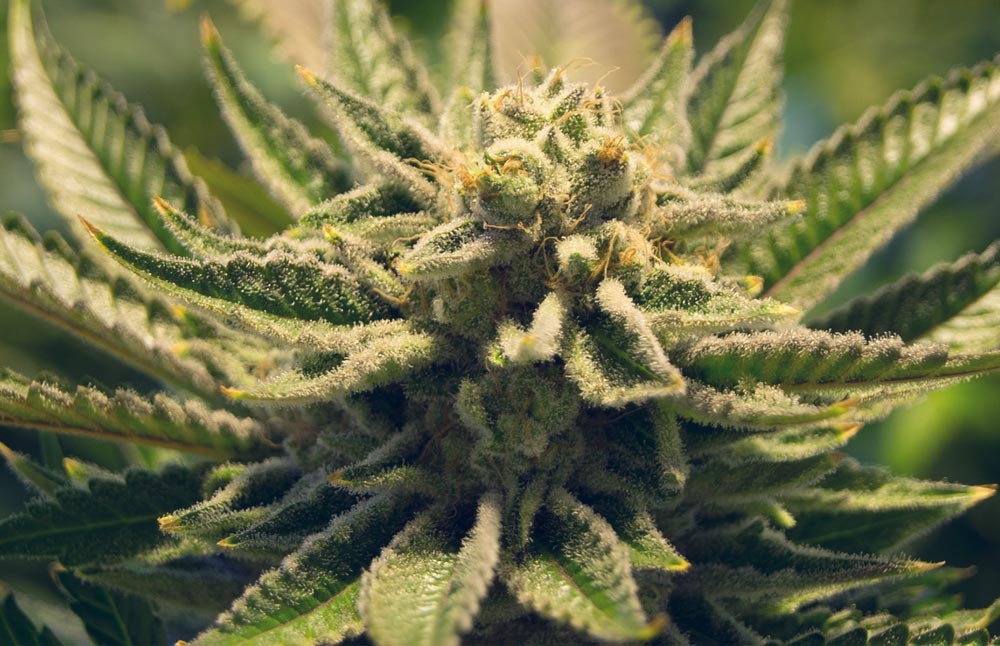
There are three big trending catalysts colliding within the growing cannabis market;
1) regulatory legalization 2) supporting science and 3) industry/product innovation
The number of grassroot groups who have propelled the medical cannabis and recreational marijuana movements forward into a healthy growing future would take a long laundry list of organizations and teams to include them all. While much of the cannabis industry's advancements are still unfolding; for 2020 and beyond there is an intriguing interest blossoming to ‘get in early' on a marijuana stock or even a random penny pot stock.
The marijuana industry as a whole is expected to triple in the next five years, where to put in perspective, in just the next 36 months CBD has a forecast of going from $2 billion to $22 billion market alone. From prohibition-ending federal regulations being passed to only 11 out of 50 US states fully legalizing recreational marijuana so far, to an FDA-approved CBD-based drug Epidiolex; relentless innovation within the cannabis revolution will stay in a constant flux of upward direction as medical marijuana moves into mainstream media acceptance and hemp starts taking the highway to wholesome health in the new decade.
But as with any investment, just as easy if not harder for it any to go up in value, is just as simple if not faster to fall down too. Despite the total global cannabis consumer use (both legal and illicit) in 2019 was estimated to be $344 Billion worth ($13.6 Billion legal US cannabis sales), make no mistake in marijuana stocks can be just as risky as any other conventional investment. A sad but likely outcome for the future of many of today's biggest weed stocks is that the majority will not survive the long haul. From over-ambitious business plans to being a super competitive environment, not all companies and brands in 2020 will be here in years to come.
But that doesn't mean every investment made in the cannabis market should not be taken seriously if interested in getting involved in one way or another. So if you want to invest in marijuana stocks the smart way, what are the steps to follow or understand first as part of the research process? Is investing in marijuana stocks actually legal? How do you analyze marijuana companies to ensure you maximize profit and minimize risk?
Our weed stocks guide is designed to help map out an optimal process of researching, reviewing and ultimately vetting these cannabis companies thoroughly. Below there is a list of the top 25 most popular marijuana stocks in 2020 to analyze that will start the journey of discovering where the possible winners and big gains could play out. Follow the cannabis investment tips below to give yourself the best chance of buying into a reputable brand with a trustworthy team who has uniquely-positioned upside potential.
Keep reading to discover everything to know about investing in marijuana stocks in 2020.
Contents
How to Invest in Marijuana Stocks: Seven Easy Steps
You’re in luck! Investing in marijuana stocks is easier today than it has ever been before. There are more publicly-listed marijuana companies today in 2020 than at any point in history.
The first publicly-traded marijuana companies started to appear in the early 2010s, taking advantage of available acronyms like WEED and POT on the world’s largest stock exchanges.
Today, you have plenty of choices among marijuana stocks – from small caps to large caps and even to blue chips.
Here are the seven steps you can use to invest in cannabis stocks today:
Step 1) Understand the Types of Marijuana Products
When someone says they want to invest in “marijuana”, it’s like saying they want to invest in “real estate”: it’s a large sector with lots of different avenues.
Generally, however, the two types of marijuana products can be separated into:
- Medical Marijuana
- Recreational Marijuana
- CBD Investment guide (here)
Some companies produce THC products for states or countries where recreational marijuana is legal. Other companies invest in medical marijuana products, seeking FDA approval for new drugs backed by research and clinical studies.

Step 2) Understand the Differences Between Marijuana Stocks
Just like there are different marijuana products, there are also different types of marijuana stocks. Types of marijuana stocks include – but are not limited to – all of the following:
- Marijuana growers like Canopy Growth Corporation (NYSE:CGC)
- Marijuana biotech firms like GW Pharmaceuticals (NASDAQ:GWPH)
- Companies that indirectly support the marijuana industry, like Scotts Miracle-Gro (NYSE:SMG)
- Multi-state operators (MSOs) that serve customers in multiple states, like Trulieve Cannabis Corp (TCNNF)
- Marijuana marketing or services companies
- Marijuana index funds and other investment products (like HMLSF or MJ)

Step 3) Analyze the Risks of Investing in Marijuana Stocks
Before investing in anything, you need to do research to ensure you comprehensively understand the risks of investing in that thing.
The risks of investing in marijuana stocks include:
- Legal and political risks
- Supply and demand imbalances
- High failure rate among marijuana startups
- The boom and bust cycles of any trendy industry

Step 4) Know What to Look for in a Marijuana Stock
In some ways, marijuana stock investing requires the same research as investing in conventional stocks: you look at the management team, business plan, growth strategy, and competition, for example.
In other ways, marijuana stock investing requires unique research. Some of the things to look for in a marijuana stock include:
- Normal stock considerations like management team, growth strategy, competition analysis, financials
- Cannabis-specific considerations like all-in cost of sales per gram and cash cost per gram
- Areas of operation (i.e. only in Canada for Canadian companies or a multi-state presence for American companies)
- Unique selling features – like unique strains, brands, or products that aren’t sold by any other company

Step 5) Evaluate the Top Marijuana Stocks, ETFs, and Other Investment Funds
Certain marijuana stocks and ETFs frequently appear at the top of every “best pot stocks” list.
You’ll find marijuana growers like Aurora Cannabis (NYSE: ACB), Tilray (NASDAQ:TLRY), Aphria (NYSE:APHA), and Canopy Growth, for example, on most such lists.
You’ll also find biotechs like Cara Therapeutics (NASDAQ:CARA), Insys Therapeutics (NASDAQ:INSY), and GW Pharmaceuticals.
Or, you’ll find ancillary providers like Scotts Miracle-Gro
You’ll also find cannabis exchange traded funds and other investment products like Horizons Marijuana Life Sciences ETF (NASDAQ:HMLSF) and ETFMG Alternative Harvest ETF (NYSE:MJ)

Step 6) Invest Based on Research
You’ve done all the hard work so far. Now, it’s time to take action. Invest carefully based on all of the work you’ve done in the previous steps. If you’ve done all of the hard work already, then this should be the easy part: all you need to do is click ‘Buy’.
Some investors will do all of the work in steps 1 through 5 and then decide that investing in cannabis isn’t the right choice for their investment goals. That’s okay.
For investors that do buy-in, it’s important to decide how much of your portfolio to invest in marijuana stocks. As every investment guide in the world tells you, diversification is crucial.
Investing only a small amount into pot stocks minimizes your risk but limits your gains. Investing a larger amount maximizes gains with higher risk.

Step 7) Monitor the Industry Regularly
Most industries change on a regular basis. Few industries, however, change as frequently – or as severely – as the modern marijuana industry.
Let’s say a new country or state legalizes recreational use of marijuana. This can increase a company’s potential customer base by millions.
Or, the FDA might approve a new cannabis-based drug – like in 2018 when the FDA approved Epidiolex, a CBD-based drug with a proven ability to reduce seizures in certain patients.
Adjustments like this change significant aspects of the marijuana industry. They should also affect your investment decisions.
Ideally, you’ll check marijuana stock information daily to ensure your portfolio is up-to-date. However, it’s more realistic to check industry news once a week. Check news on a weekly basis, then adjust your portfolio every month or every quarter, based on your investment goals and typical investment engagement.
Some people are active investors or day traders, adjusting their portfolio on an hourly or daily basis. Others are couch potato investors, buying well-researched stocks and holding them for long periods of time.

Should You Buy Marijuana Stocks?
We’ve explained the step by step process to investing in marijuana stocks. But should you invest in marijuana stocks?
That’s up to you to decide.
Marijuana is a trendy sector. Like any trendy sector, there are pros and cons. Think of the Dot Com Bubble of the late 1990s. This boom gave rise to Amazon, Google, and other giants that remain some of the world’s most valuable companies today. The boom also gave rise to thousands of companies that claimed to be the next Google or Amazon – but closed down in 1999 after failing to live up to promises.
You want to find the next Amazon or Google – not the next Boo.com or Webvan.com.
Where Are Marijuana Stocks Listed?
For legality reasons, some of today’s largest marijuana companies are listed on the Toronto Stock Exchange (TSX). Companies feel more comfortable listing their shares on the TSX given the additional regulatory clarity across the country.
A growing number, however, are now getting listed on American exchanges. The New York Stock Exchange (NYSE) and the NASDAQ both got their first pure cannabis company listings in 2018.
Many marijuana stocks are also traded via over the counter (OTC) markets.
Some investors – particularly traditional investors – are wary of investing in OTC markets. They claim OTC investing is sketchy and higher-risk. Your mileage will vary: there are low-quality companies listed on the NYSE and other major markets just like there are low quality companies on over the counter markets. Careful investors can find low-risk, high-value stocks anywhere.
Where to Check Marijuana Stock Prices
You don’t have to go to any special portals to check marijuana stock prices. They can be found on any ordinary stock portal.
Some of the best and most popular way to check marijuana stock prices include:
- Google Finance
- MarketWatch
- CNN Money
- TheStreet
You can also find websites dedicated specifically to marijuana stocks. However, these websites aren’t as valuable now that pot stocks have gone mainstream.

Is Investing in Marijuana Stocks Legal?
Understandably, some investors have legal concerns about investing in marijuana stocks. So is it legal to invest in marijuana stocks?
Yes, from a legal standpoint, most experts agree that it’s perfectly safe to invest in marijuana stocks, and individual investors are unlikely to face any consequences of investing in marijuana stocks.
Some claim otherwise, however. Some institutional investors are wary of investing in marijuana because of perceived legal concerns.
Some claim that investing in pot stocks constitutes a “conspiracy to violate the controlled Substances Act”, for example.
Of course, complicating matters further is that there are traditional investors like billionaire investor and “Shark Tank” personality Kevin O’Leary who say they will never touch a marijuana stock for as long as marijuana is federally classified as a Schedule 1 narcotic.
Ultimately, for as long as marijuana is federally classified as a Schedule 1 narcotic in the United States, there are always going to be legal concerns and myths. Legal experts, however, agree that there’s no valid reason for individual investors to worry about investing in marijuana stocks.
Should You Invest in Canadian Cannabis Stocks?
Canada legalized the recreational use of marijuana nationwide in 2018, becoming the second country in the world (after Uruguay, which legalized marijuana in 2013).
Today, some of the world’s largest marijuana companies are headquartered in Canada. There are major growing operations across the country, and Canadian companies are increasingly shipping their products to the United States, Europe, and other major international marketplaces.
Most investment platforms make it easy to invest in international stocks. You can easily purchase Canadian marijuana stocks that are publicly-traded on the Toronto Stock Exchange (TSX), for example.
Investing in Canadian cannabis stocks can be a great decision. Canada is the only major country in the world with a fully-fledged (and rapidly developing) nationwide regulatory scheme for marijuana companies. Unlike in the United States, marijuana companies aren’t subject to the whims of state-by-state regulations or the contradictory rulings of the federal government.
One of the important things to remember about investing in Canada, however, is the size of the country. Canada is the second largest country in the world, but it has a lower population than California. Canadian cannabis companies that limit themselves to the domestic marketplace may have limited growth opportunities.
What’s Up With Over the Counter Marijuana Stocks?
While some cannabis stocks are listed on the TSX, NYSE, and NASDAQ, others are listed on over the counter (OTC) markets.
What exactly does this mean? Are OTC markets riskier?
Companies may list themselves on over the counter exchanges to avoid regulatory issues in the United States. By listing themselves on an OTC exchange, a cannabis company is not subject to the same level of scrutiny imposed by major exchanges and the SEC.
In that sense, OTC markets are certainly riskier than traditional markets. Some traders see them the same as penny stocks: there’s a lot more risk, but there’s also a lot more potential reward.
However, any cannabis companies traded on the TSX and Canadian Securities Exchange (CSE) are subject to strict requirements similar to the requirements for major US exchanges.
When a company lists themselves on an OTC market, it indicates that the entrepreneurs running the company believed this was the best way to gain access to capital.
Some traditional investors will avoid OTC markets at all costs. Others, however, believe there’s unjustified prejudice against OTC markets – and that smart investors can find great value in the OTC marketplace.
Top 25 Marijuana Stocks Available in 2020

We do not give out investment advice. The stocks listed below are simply some of the best-known marijuana stocks available today. Always do your own research before investing in anything.
Canopy Growth Corp. (CGC)
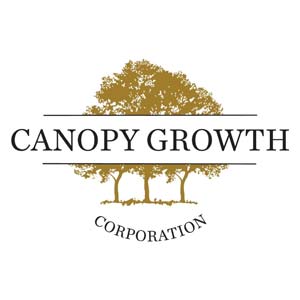 Canopy Growth Corp. was the first Canadian marijuana company. Today, it’s the world’s largest publicly-traded marijuana company. The Canopy family includes a number of brands. Plus, Canopy sells both recreational and medical marijuana products. Tweed, which is associated with rapper Snoop Dogg, is one of Canopy’s best-selling brands, reporting $77.9 million CAD in sales in 2019. Canopy also made headlines in October 2017 when Constellation Brands, the beverage giant behind Corona, Modelo, and other major brands, purchased a 9.9% stake in the company. The partnership could lead to cannabis-infused beer in the future.
Canopy Growth Corp. was the first Canadian marijuana company. Today, it’s the world’s largest publicly-traded marijuana company. The Canopy family includes a number of brands. Plus, Canopy sells both recreational and medical marijuana products. Tweed, which is associated with rapper Snoop Dogg, is one of Canopy’s best-selling brands, reporting $77.9 million CAD in sales in 2019. Canopy also made headlines in October 2017 when Constellation Brands, the beverage giant behind Corona, Modelo, and other major brands, purchased a 9.9% stake in the company. The partnership could lead to cannabis-infused beer in the future.
Aurora Cannabis Inc. (ACB)
 Aurora Cannabis Inc. is nearly as big and well-known as Canopy. In March 2019, Aurora became even larger when it acquired rivalMedReleaf in a $250 million all-stock deal. The deal with the marijuana industry’s largest to date. Together, Aurora and MedReleaf plan to produce over 570,000 kilograms per year of cannabis with their nine facilities in Canada and two in Denmark. The consolidation of the two companies should also make the overall operation more efficient. Aurora has been listed on the TSX in October 2016 and is also listed on the NYSE.
Aurora Cannabis Inc. is nearly as big and well-known as Canopy. In March 2019, Aurora became even larger when it acquired rivalMedReleaf in a $250 million all-stock deal. The deal with the marijuana industry’s largest to date. Together, Aurora and MedReleaf plan to produce over 570,000 kilograms per year of cannabis with their nine facilities in Canada and two in Denmark. The consolidation of the two companies should also make the overall operation more efficient. Aurora has been listed on the TSX in October 2016 and is also listed on the NYSE.
Cronos Group Inc. (CRON)
 Cronos Group Inc. is yet another Canadian marijuana giant. The Toronto-based cultivator ships products across Canada, but they also serve Germany and other international markets. In recent months, Cronos has launched ventures in Israel and Australia. Cronos, however, does not have an American presence: they’re waiting for better regulatory clarity before crossing the border. In 2018, Cronos generated $7.3 million in revenue.
Cronos Group Inc. is yet another Canadian marijuana giant. The Toronto-based cultivator ships products across Canada, but they also serve Germany and other international markets. In recent months, Cronos has launched ventures in Israel and Australia. Cronos, however, does not have an American presence: they’re waiting for better regulatory clarity before crossing the border. In 2018, Cronos generated $7.3 million in revenue.
AbbVie (ABBV)
 AbbVie is a pharmaceutical company that shot to prominence when the FDA approved Marinol, a drug that uses a synthetic form of marijuana to alleviate nausea in chemotherapy patient and appetite loss in AIDS patients. To be clear, AbbVie is not strictly a marijuana company, and Marinol isn’t the company’s best-known or bestselling drug. They’re a biotech company that makes a range of different drugs. ABBV is a popular investment for those who want to dip their toes into marijuana investing without going all in with a ‘pure’ cannabis company.
AbbVie is a pharmaceutical company that shot to prominence when the FDA approved Marinol, a drug that uses a synthetic form of marijuana to alleviate nausea in chemotherapy patient and appetite loss in AIDS patients. To be clear, AbbVie is not strictly a marijuana company, and Marinol isn’t the company’s best-known or bestselling drug. They’re a biotech company that makes a range of different drugs. ABBV is a popular investment for those who want to dip their toes into marijuana investing without going all in with a ‘pure’ cannabis company.
GW Pharmaceuticals (GWPH)
 GW Pharmaceuticals GW Pharmaceuticals is a UK-based company that also rose to prominence after FDA approval of their major drug. GW Pharmaceuticals makes Epidiolex, which uses synthetically-derived CBD to treat seizures in children. The drug was fast-tracked to approval by the FDA after it proved to be effective for treating seizures associated with two rare forms of epilepsy, including Lennox-Gastaut syndrome and Dravet syndrome.
GW Pharmaceuticals GW Pharmaceuticals is a UK-based company that also rose to prominence after FDA approval of their major drug. GW Pharmaceuticals makes Epidiolex, which uses synthetically-derived CBD to treat seizures in children. The drug was fast-tracked to approval by the FDA after it proved to be effective for treating seizures associated with two rare forms of epilepsy, including Lennox-Gastaut syndrome and Dravet syndrome.
Terra Tech Corp (TRTC)
 Terra Tech is one of several companies on this list that isn’t strictly a cannabis company: it’s a diversified agricultural company involved in the medical marijuana space. Founded a decade ago, Terra produces the medical marijuana brand IVXX, while the company’s cultivation operations are organized under the name Edible Gardens. You can also spot Terra’s retail cannabis stores, called ‘Blum’, in various legal markets. TRTC is an OTC-listed company with operations in the United States and Nevada. The company earned $8.6 million of revenue in Q1 2019.
Terra Tech is one of several companies on this list that isn’t strictly a cannabis company: it’s a diversified agricultural company involved in the medical marijuana space. Founded a decade ago, Terra produces the medical marijuana brand IVXX, while the company’s cultivation operations are organized under the name Edible Gardens. You can also spot Terra’s retail cannabis stores, called ‘Blum’, in various legal markets. TRTC is an OTC-listed company with operations in the United States and Nevada. The company earned $8.6 million of revenue in Q1 2019.
Aphria (APHA)
 Aphria is one of the best-known pot stocks available today. The Canadian cannabis company is listed on both the TSX and NYSE. With a market capitalization of over $3 billion, Aphria is officially one of the largest cannabis companies in the world despite being less than five years old (the company was founded in 2014). In 2017, Aphria announced a US expansion strategy. Aphria has also expanded into the German cannabis market through its Germany-based subsidiary, Aphria Deutschland GmbH, which received 1 of only 3 domestic cultivation licenses from the German government’s Federal Institute for Drugs and Medical Devices (BfArM) in April 2019.
Aphria is one of the best-known pot stocks available today. The Canadian cannabis company is listed on both the TSX and NYSE. With a market capitalization of over $3 billion, Aphria is officially one of the largest cannabis companies in the world despite being less than five years old (the company was founded in 2014). In 2017, Aphria announced a US expansion strategy. Aphria has also expanded into the German cannabis market through its Germany-based subsidiary, Aphria Deutschland GmbH, which received 1 of only 3 domestic cultivation licenses from the German government’s Federal Institute for Drugs and Medical Devices (BfArM) in April 2019.
Tilray (TLRY)
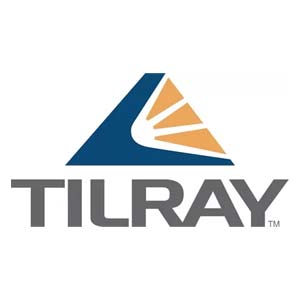 Tilray was the first cannabis company to have an initial public offering (IPO) in the United States. The Nanaimo, British Columbia-based company specializes in medical marijuana products. They’re one of the largest publicly-listed marijuana firms available today.
Tilray was the first cannabis company to have an initial public offering (IPO) in the United States. The Nanaimo, British Columbia-based company specializes in medical marijuana products. They’re one of the largest publicly-listed marijuana firms available today.
Cara Therapeutics (CARA)
 Cara Therapeutics is a biotech company currently at the clinical stage of development. The company is building drugs to treat pruritus and acute and chronic pain. The company’s pipeline includes a handful of opioid and cannabinoid drugs, including the CB agonist CR701 that is currently going through pre-clinical trials. If the clinical trials continue to be successful, then Cara Therapeutics could become as prominent as GW and AbbVie among marijuana investors.
Cara Therapeutics is a biotech company currently at the clinical stage of development. The company is building drugs to treat pruritus and acute and chronic pain. The company’s pipeline includes a handful of opioid and cannabinoid drugs, including the CB agonist CR701 that is currently going through pre-clinical trials. If the clinical trials continue to be successful, then Cara Therapeutics could become as prominent as GW and AbbVie among marijuana investors.
Axim Biotechnologies (AXIM)
 Axim Biotechnologies is listed on OTC markets. The biotech company has around 20 drugs in its pipeline, including drugs going through phase I and II clinical trials and other drugs going through pre-clinical trials. The drugs cover a range of different concerns, including everything from dry eyes to opioid addiction to inflammatory bowel disease.
Axim Biotechnologies is listed on OTC markets. The biotech company has around 20 drugs in its pipeline, including drugs going through phase I and II clinical trials and other drugs going through pre-clinical trials. The drugs cover a range of different concerns, including everything from dry eyes to opioid addiction to inflammatory bowel disease.
Arena Pharmaceuticals (ARNA)
 Arena Pharmaceuticals is a biotech company listed on the NASDAQ under ARNA. The company manufactures medical marijuana drugs. There’s a lot of promise around Arena’s APD371 drug in the pipeline, and that drug is currently the main focus of the cannabis biotech company’s initiatives.
Arena Pharmaceuticals is a biotech company listed on the NASDAQ under ARNA. The company manufactures medical marijuana drugs. There’s a lot of promise around Arena’s APD371 drug in the pipeline, and that drug is currently the main focus of the cannabis biotech company’s initiatives.
New Age Beverages Corp. (NBEV)
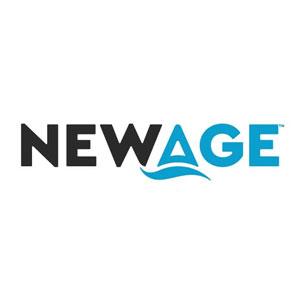 New Age Beverages Corp. is a NASDAQ-listed beverage maker known for its green tea, yerba mate, kombucha, and similar products. In the last year, the company has expanded its drink offerings to include CBD blends as well, which is why you can find New Age Beverages Corp. on several lists like this one.
New Age Beverages Corp. is a NASDAQ-listed beverage maker known for its green tea, yerba mate, kombucha, and similar products. In the last year, the company has expanded its drink offerings to include CBD blends as well, which is why you can find New Age Beverages Corp. on several lists like this one.
KushCo Holdings (KSHB)
 KushCo Holdings is an OTC-listed stock popular among marijuana investors. The company’s best-known brand is Kush Bottles, which provides packaging solutions and supplies for cannabis producers. With 12 facilities across the United States, KushCo Holdings has also experienced rapid growth in recent years, jumping from $18.8 million in revenue in 2017 to $52.07 million in 2018.
KushCo Holdings is an OTC-listed stock popular among marijuana investors. The company’s best-known brand is Kush Bottles, which provides packaging solutions and supplies for cannabis producers. With 12 facilities across the United States, KushCo Holdings has also experienced rapid growth in recent years, jumping from $18.8 million in revenue in 2017 to $52.07 million in 2018.
Scotts Miracle-Gro Company (SMG)
 Scotts Miracle-Gro Company appears on nearly every list of the best marijuana stocks to invest in – and for good reason. In 2016, the CEO of the company announced that they would make a huge push into cannabis – particularly the hydroponics space. After announcing plans to invest half a billion into cannabis, Scotts Miracle-Gro Company lived up to its word by buying hydroponics equipment maker Sunlight Supply Inc. for $450 million.
Scotts Miracle-Gro Company appears on nearly every list of the best marijuana stocks to invest in – and for good reason. In 2016, the CEO of the company announced that they would make a huge push into cannabis – particularly the hydroponics space. After announcing plans to invest half a billion into cannabis, Scotts Miracle-Gro Company lived up to its word by buying hydroponics equipment maker Sunlight Supply Inc. for $450 million.
Zynerba Pharmaceuticals Inc. (ZYNE)
 Zynerba Pharmaceuticals Inc. is a biotech company developing topical drugs made from synthetic cannabis. The company’s products deliver the benefits of cannabis transdermally (through the skin). Just apply the products to relieve the pain associated with fibromyalgia, osteoarthritis, and other conditions.
Zynerba Pharmaceuticals Inc. is a biotech company developing topical drugs made from synthetic cannabis. The company’s products deliver the benefits of cannabis transdermally (through the skin). Just apply the products to relieve the pain associated with fibromyalgia, osteoarthritis, and other conditions.
General Cannabis Corp (CANN)
G eneral Cannabis Corp is a marijuana business service industry that provides real estate, consulting, business development, and security services to cannabis companies nationwide. The Denver-based company is traded on OTC markets. They also own their own lifestyle apparel brand – Chiefton Supply Co, which makes a popular lineup of cannabis-themed shirts, hats, and more.
eneral Cannabis Corp is a marijuana business service industry that provides real estate, consulting, business development, and security services to cannabis companies nationwide. The Denver-based company is traded on OTC markets. They also own their own lifestyle apparel brand – Chiefton Supply Co, which makes a popular lineup of cannabis-themed shirts, hats, and more.
Innovative Industrial Properties Inc. (IIPR)
 Innovative Industrial Properties Inc. (IIPR) is a real estate investment truth (REIT), giving investors a unique way to participate in the marijuana industry. Innovative Industrial Properties owns a range of industrial properties in six states. They reported $14.79 million in revenue in 2018.
Innovative Industrial Properties Inc. (IIPR) is a real estate investment truth (REIT), giving investors a unique way to participate in the marijuana industry. Innovative Industrial Properties owns a range of industrial properties in six states. They reported $14.79 million in revenue in 2018.
GrowGeneration Corp (GRWG)
 GrowGeneration Corp is an OTC-listed company that sells specialized hydroponic and organic gardening supplies across six states. The company’s products include nutrient, soils, lighting equipment, and hydroponic supplies, among other equipment. GrowGeneration is aiming to earn $85 million in revenue by 2020 after generating $29 million in 2018.
GrowGeneration Corp is an OTC-listed company that sells specialized hydroponic and organic gardening supplies across six states. The company’s products include nutrient, soils, lighting equipment, and hydroponic supplies, among other equipment. GrowGeneration is aiming to earn $85 million in revenue by 2020 after generating $29 million in 2018.
mCig Inc. (MCIG)
 mCig Inc. is a diversified holding company with a range of products and services in its family, including vaporizers, media assets, growers, cultivators, dispensaries, and consulting services. The company describes itself as a “diversified and vertically integrated” cannabis firm that is “fully diversified across multiple areas of the marijuana industry”.
mCig Inc. is a diversified holding company with a range of products and services in its family, including vaporizers, media assets, growers, cultivators, dispensaries, and consulting services. The company describes itself as a “diversified and vertically integrated” cannabis firm that is “fully diversified across multiple areas of the marijuana industry”.
Constellation Brands (STZ)
 Constellation Brands is best known for making Modelo beer, Corona beer, and Svedka vodka, among other popular beverages. In 2016, the company invested $190 million in Canopy Growth. They’re expected to launch cannabis-infused non-alcoholic beverages by the end of 2019 as the money consumers used to spend on alcohol is increasingly spent on legal marijuana products.
Constellation Brands is best known for making Modelo beer, Corona beer, and Svedka vodka, among other popular beverages. In 2016, the company invested $190 million in Canopy Growth. They’re expected to launch cannabis-infused non-alcoholic beverages by the end of 2019 as the money consumers used to spend on alcohol is increasingly spent on legal marijuana products.
Heineken N.V. (HEINY)
 European beverage giant Heineken has already launched its own cannabis beverage called Hi-Fi Hops, based on the popular Lagunitas IPA (Heineken acquired California-based Lagunitas in 2017). Today, Lagunitas has partnered with medical marijuana company CannaCraft to distribute Hi-Fi Hops, and the beverage can be found throughout dispensaries in California.
European beverage giant Heineken has already launched its own cannabis beverage called Hi-Fi Hops, based on the popular Lagunitas IPA (Heineken acquired California-based Lagunitas in 2017). Today, Lagunitas has partnered with medical marijuana company CannaCraft to distribute Hi-Fi Hops, and the beverage can be found throughout dispensaries in California.
HEXO Corp (HEXO)
 HEXO Corp is a Quebec-based cannabis company that has faced some supply problems since the nationwide legalization of cannabis in 2018. However, HEXO Corp has some unique advantages – like a joint venture agreement with Molson Coors Brewing to produce CBD-infused beverages. HEXO also has more than 600,000 square feet of facilities dedicated to the cultivation and processing of CBD products, making them a potential future leader in the growing CBD product space.
HEXO Corp is a Quebec-based cannabis company that has faced some supply problems since the nationwide legalization of cannabis in 2018. However, HEXO Corp has some unique advantages – like a joint venture agreement with Molson Coors Brewing to produce CBD-infused beverages. HEXO also has more than 600,000 square feet of facilities dedicated to the cultivation and processing of CBD products, making them a potential future leader in the growing CBD product space.
OrganiGram Holdings (OGI)

OrganiGram Holdings (NASDAQ:OGI) is one of the few Canadian cannabis giants based in the Atlantic region of the country. The New Brunswick-based company is competing against its Ontario, Quebec, and British Columbia-based competitors. Although its smaller than some of the bigger players on this list, OrganiGram Holdings is well setup to dominate the less-competitive Atlantic Canada marketplace, which also has some of the highest adult-use cannabis rates in the entire country.
Acreage Holdings
 Formerly known as High Street Capital Partners, Acreage Holdings is a public company based in British Columbia but headquartered in New York City. The company operates a diverse portfolio of cannabis cultivation, processing, and dispensing operations across the United States. After going public on the Canadian Securities Exchange in November 2018, Acreage quickly became one of the largest U.S.-headquartered cannabis companies. Today, Acreage has cultivation, processing, and dispensing licenses or agreements with holders in 19 states. They also manage The Botanist chain of retail stores.
Formerly known as High Street Capital Partners, Acreage Holdings is a public company based in British Columbia but headquartered in New York City. The company operates a diverse portfolio of cannabis cultivation, processing, and dispensing operations across the United States. After going public on the Canadian Securities Exchange in November 2018, Acreage quickly became one of the largest U.S.-headquartered cannabis companies. Today, Acreage has cultivation, processing, and dispensing licenses or agreements with holders in 19 states. They also manage The Botanist chain of retail stores.
Molson Coors Brewing Company (TAP)
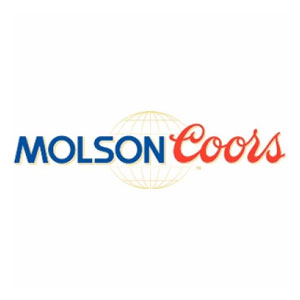 Molson Coors has joined the ranks of other beverage giants by announcing plans to enter the legal pot business. Earlier this year, Molson Coors announced in an SEC filing that the rise of legal cannabis in Canada and certain states represented a significant risk to its business as consumers shift discretionary spending away from alcohol. To address this risk, Molson Coors acquired cannabis company The Hydrotherapy Corp., which is planning to launch cannabis-infused beverages for the Canadian market.
Molson Coors has joined the ranks of other beverage giants by announcing plans to enter the legal pot business. Earlier this year, Molson Coors announced in an SEC filing that the rise of legal cannabis in Canada and certain states represented a significant risk to its business as consumers shift discretionary spending away from alcohol. To address this risk, Molson Coors acquired cannabis company The Hydrotherapy Corp., which is planning to launch cannabis-infused beverages for the Canadian market.
Evaluating Marijuana Companies: How to Invest Without Getting Burned
During the Dot Com Boom, any company with the word “dot com” in its name could attract the attention of investors – regardless of whether they had any chance of achieving their goals.
We’ve seen something similar with blockchain companies, marijuana companies, and companies in other trendy niches.
So how can you invest without getting burned? Here are some tips for evaluating marijuana stocks in a rapidly growing industry:
Check the Size and Scope of a Company
Marijuana companies vary widely in size and scope. Some companies are building products specifically for medical marijuana patients in California. Others are creating recreational marijuana products for customers in Canada, the United States, and Europe.
Canopy, for example, was the first billion dollar cannabis company. Its valuation is partly linked to its large scope: Canopy has massive production facilities and aims to ship its products worldwide.
Aurora, meanwhile, has similarly impressive production facilities with a unique advantage: the facilities are positioned right next to Edmonton International Airport, allowing the company to potentially reach international markets more easily than its competitors.
Of course, there’s nothing wrong with targeting smaller marijuana companies. Some companies are targeting smaller, untapped niches – like making cannabis-based drugs for children with rare conditions like Dravet Syndrome.
Unique Products, Services, and Selling Features
What killer product does the company sell? What’s the unique service from the company that you can’t get anywhere else? What does this company do better than anyone else in the industry?
If a company doesn’t have a unique selling feature, it can easily be wiped out by a competitor.
Some of the unique products, services, and selling features in the marijuana industry include:
- Strain or brand of cannabis
- Concentration of CBD or THC
- Location or target market
- Management group, celebrity endorsement, or support
- Production facilities
- Green technology to keep energy costs and emissions down
- Name recognition
Why do people pay $30 for Grey Goose when they can buy a similar quality of vodka for $15 per bottle? Because Grey Goose has excellent brand recognition.
Analyze Financial Support
How is a company being financed? How much cash flow does the company have?
Marijuana companies aren’t financed like traditional startups. Conventional American banks won’t touch marijuana companies – even in legal states.
Obviously, financing has to come from somewhere. As an intelligent investor, you need to analyze that financing.
Some of the best-funded marijuana companies are already scooping up smaller competitors. They’re snowballing into larger and larger operations.
Of course, simply having enormous funding isn’t good enough. Even the wealthiest companies are a few bad investments away from failure.
Strong funding mixed with astute financial decisions, however, is a winning combination.
Location
Location is important in any industry. It’s particularly important in the marijuana industry, however.
Today, unclear regulations have made certain jurisdictions inhospitable for marijuana companies. Regions with clear regulations, meanwhile, are watching marijuana companies thrive.
Just like with real estate, location is crucial.
It’s not just about where the operation is based; it’s about where the company is targeting. A company that limits itself to only selling in Canada, for example, is limiting its customer base to 34 million people – less than the population of California.
The Team
A company might have the best business plan, financing, and location – but they don’t have the management team to execute everything.
Some management teams are experienced. They have decades of experience running successful businesses in multiple industries. Other management teams have great synergy: they work well together and complement each other’s strengths. Some management teams are stacked with Ph.Ds, experienced growers, or clinical research veterans.
There’s no single “winning” type of management team. This is where investment opinions can vary considerably.
Marketing, Branding, and PR
Marketing and branding is another crucial element. A company might have an effective combination of everything listed above – only to fail to succeed because of poor marketing.
What does the company’s website look like? Does the company’s branding target a unique niche or demographic? Is the company distinguishing itself from competitors with a unique brand image? Or is the company simply blending in with every other marijuana company on this list?
The Type of Cannabis Company
Cannabis companies focus on different aspects of the industry. Some of the major types of cannabis companies seen today include:
- Growers
- Dispensaries and Budtenders
- Delivery Services
- Contractors
- Trimmers
- Device Makers
- Online Platforms
- Venture Capitalists or Hedge Funds
- Ancillary Companies
Other Tips for Investing in Marijuana Stocks
Understand Marijuana Stock Investing Isn’t New: The first marijuana stocks appeared on major markets in the early 2010s. The industry surged in value during the first few years, making a lot of early investors wealthy. Since 2017, however, the pop stock bubble has somewhat ‘popped’. From January 2018 to January 2019, the United States Marijuana Index fell 20.7%, compared to a loss of about 6.5% by the S&P 500. The easy fortunes from the early days of marijuana investing are heard to find today. While 2020 the cannabis stock market may come back in full force, nothing is guaranteed and it could be a much slower process than everyone predicts.
Legal Concerns? Invest in Ancillary Companies: You can benefit from pot stocks without ever investing in a marijuana-producing company. Many companies serve the marijuana industry in ways that have nothing to do with cannabis. Scotts, for example, sells hydroponics equipment to growers.
Diversify Within the Cannabis Space: You can diversify investments across the cannabis space. You can invest in ancillary cannabis producers, a dispensary in California, and a grower in Europe, for example. Diversifying your cannabis investments insulates you from, say, national policy changes.
Even Blue Chips Aren’t a Sure Thing: Anything can go to zero in the cannabis space. Even the blue chip stocks can have limited revenue streams. Just because everyone is investing in a marijuana stock doesn’t mean it’s a sure thing.
Don’t Forget About Exchange Rates: Many companies on this list use the Canadian Dollar (CAD) to express revenue and other figures. Others use the USD. The CAD has been worth about $0.70 of the USD over the past five years, so this can significantly change the final figure. It can also affect long term investing. Let’s say you buy a Canadian pot stock listed on the TSX. That stock goes up 30% over the next two years. However, the CAD also rises 10% compared to the USD. You’ve gained 30% in CAD terms and gained another 10% on the exchange rate in USD terms.

Marijuana Investing Glossary: Terms You Need to Know
You don’t have to be a marijuana user to invest in marijuana stocks. Here are some common terms you may want to understand, however, to get maximum results from your marijuana investment portfolio.
THC: Delta-9 tetrahydrocannabinol (THC) is one of several hundred cannabinoids in the cannabis plant. THC is best-known for its psychoactive properties: it’s the chemical compound in marijuana that makes you high.
CBD: Cannabidiol (CBD) is the second best-known cannabinoid in the cannabis plant (behind only THC). CBD has risen to prominence in recent years due to its purported health benefits.
Marijuana Versus Cannabis: Cannabis is the scientific name of the plant (the genus that includes three species). For investment research, however, marijuana and cannabis are typically used interchangeably – similar to terms like weed, dope, pot, 420, grass, etc.
Hemp: Hemp is a specific strain of the cannabis plant with relatively low levels of THC and high levels of CBD. Hemp is legal to grow across the United States. Regulators define hemp as a cannabis plant with less than 0.3% THC content. Hemp has been used for millennia for everything from medicine to rope.
‘Plant Touching’: Some investors use terms like ‘plant touching’ to refer to certain companies. Plant-touching businesses are involved in the actual production and distribution of marijuana. They include growing and cultivation operations. Canopy Growth Corp and Aurora Cannabis Inc., for example, are two of the largest and best-known plant touching businesses available today.
Agitation: Agitation refers to a specific procedure in the harvesting of marijuana plants and products. During agitation, producers use physical contact with marijuana plants to break off trichromes for collection and processing.
Access Point: An access point is a location where medical marijuana patients are able to buy or pick up cannabis. Access point and dispensary are used interchangeably.
BHO: Butane hash oil, or BHO, is a powerful cannabis concentrate made from marijuana plants using butane as a solvent. It contains high levels of THC.
Bud: The bud of a marijuana plant is the flower of a mature plant. Buds contain high levels of cannabinoids, making them ideal for harvesting.
Concentrate: Concentrates are powerful extracts from the cannabis plant that contain rich levels of cannabinoids like THC. All plant material is removed during the production process. Concentrates can be used in both medical and recreational settings.
Dispensary: Any store that sells marijuana products is known as a dispensary. Some dispensaries sell accessories or paraphernalia in addition to cannabis products.
Hydroponics: Hydroponics – from the Greek words for “water cultivation” – are systems that allow you to grow cannabis without the use of soil, increasing the plant’s growth rate. Hydroponics circulate water and essential nutrients to cannabis plants to facilitate growth. Good hydroponics systems allow marijuana growers to maximize indoor growth rates and control variable factors, among other advantages.
Topical: Topical cannabis products are applied directly to the skin to address issues like pain or skin problems. Topicals may contain THC, but they rarely deliver the ‘high’ associated with typical THC products.
Final Word on Cannabis Stock Market Investing
International spending on legal cannabis is expecting to grow 230% by 2022, rising from $9.5 billion in 2017 to $31.3 billion.
While the possibility of a very fruitful endeavor exists to cash-in on an industry-known leader's growth path in terms of potential and projection, there is also a dangerous risk at making the wrong move and investing into a poorly ran, operated or managed stock. As the cannabis stock market matures, the cream of the marijuana and hemp crop will rise to the top of the market cap list, where there will be a few clear-cut winners who separate themselves and their associated brands from the industry – but will it be too late as a smart, sound investment?
With new emerging rollercoaster investment markets like cannabis and cryptocurrency becoming available to make money in by individuals, it's no secret in 2020 that marijuana stocks are some of the hottest options available today. However, given the ‘freshness' of the green rush, with so many public-promising cannabis-centric companies to choose from, many are wondering who is not only passing the eye-test (research) but is also executing (company) the gameplan towards leading a budding marketplace.
The newfound excitement and enthusiasm of these growing investment vehicles has eclipsed all other industries in the past decade and has no signs of slowing its momentum or growth path from 2020-2030. The global cannabis industry could more than triple in the next five years, so there may be no better time than today to invest in marijuana stocks.


